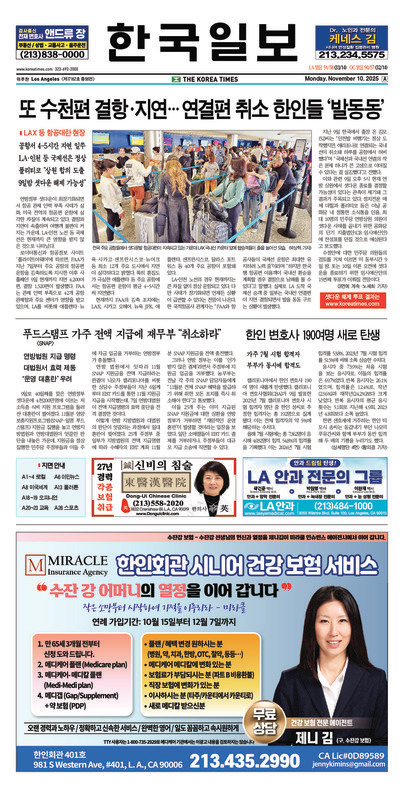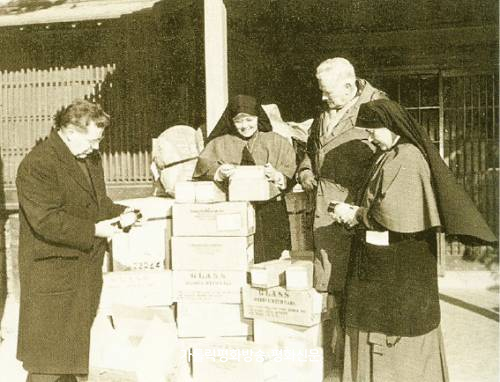Staff Reporter
The Ministry of Finance and Economy (MOFE) on Tuesday announced that the economy hit the bottom in the third quarter but economic polarization is deepening with production and exports growing amid sluggish domestic consumption and investment.
``The economy has moved out of recession,’’ MOFE director Kang Ho-in told reporters. ``Companies are also coming under increasing pressure to expand facility spending, while consumption is showing signs of improvement.’’
He added that the economy is on the recovery track, although its signs are feeble due to shortened economic cycles.
The flamboyant remarks followed a batch of impressive data; especially, the recent industrial output and export growth figures.
The cheery data show that industrial production rose 7.4 percent in October from a year earlier, while exports recorded 22.5 percent growth in November from a year ago.
The MOFE expected that companies would soon start increasing facility investment to cover the growing demand.
``The gap between production capacity and actual output is widening,’’ Kang said. ``It means firms will be forced to make more investments.’’
According to the National Statistical Office (NSO), production capacity increased by only 0.2 percentage point to 2.7 percent in October, while the growth rate of industrial output leapt to 7.4 percent from 6.6 percent.
``Furthermore, consumption will not likely exacerbate for the time being,’’ he added. ``A leading index of the OECD (Organization for Economic Cooperation and Development) is continually pointing to positive territory.’’
Nonetheless, experts caution that the abnormal recovery signs overshadow optimism. They say the economy is not exempt from the specter of a double-dip or triple-dip recession.
In fact, investment growth is lagging far behind that of exports driven by a burgeoning boom in major economies worldwide.
Industrial output grew only 1.9 percent in October from a year ago, with the country’s traditional flagship industries like automobiles and semiconductors excluded.
``It proves most of the industries related to private consumption remain weak,’’ Huh Chan-kook, chief macroeconomist at the Korea Economic Research Institute said. ``The October industrial output data, seemingly improved, explicitly showed various problems plaguing the economy.’’
Despite improvements in inventories, capital investment fell for the fourth consecutive month, recording a 3.8 percent decline in October.
``The stereotypical rule of linking exports and investment has already been broken here,’’ Huh stressed.
Most local companies will not expand investments unless economic and political uncertainties are resolved, he added.
Private spending is also suffering from deepening polarization between high-wage earners and others.
Consumption jumped 7 percent in the third quarter among high-income households, while it increased only 3.5 percent among low- to middle-income ones.
In addition, retail sales recorded a 3.4 percent drop in October, worsening from a 1.5 percent fall in September, according to the NSO.
Hong Soon-young, economist at the Samsung Economic Research Institute, said that it will take quite a long time for consumption to return to a full-scale recovery track.
``The Korean economy is in a puzzling state that is hard to understand within ordinary economic principles,’’ he said. ``It is caused by the various uncertainties shrouding the economy.’’
lcd@koreatimes.co.kr
스마터리빙
more [ 건강]
[ 건강]이제 혈관 건강도 챙기자!
[현대해운]우리 눈에 보이지 않기 때문에 혈관 건강을 챙기는 것은 결코 쉽지 않은데요. 여러분은 혈관 건강을 유지하기 위해 어떤 노력을 하시나요?
 [ 건강]
[ 건강]내 몸이 건강해지는 과일궁합
 [ 라이프]
[ 라이프]벌레야 물럿거라! 천연 해충제 만들기
 [ 건강]
[ 건강]혈압 낮추는데 좋은 식품
[현대해운]혈관 건강은 주로 노화가 진행되면서 지켜야 할 문제라고 인식되어 왔습니다. 최근 생활 패턴과 식생활의 변화로 혈관의 노화 진행이 빨라지고
사람·사람들
more
[인터뷰] “미국 최고의 중학생으로 교육할 것”
LA 한인타운 내 최초의 한인 운영 수학·과학 중학교인 ‘윈저 아카데미’(WMSA, 4055 Wilshire Blvd. #400, LA)가 지…

KAF, 23개 비영리단체에 22만여불 지원
LA에 본부를 둔 커뮤니티 재단 KAF(Korean American Foundation·이사장 존 임)가 지난 5일 EK 갤러리에서 ‘2025…
“1세대 부모님 잘 케어하기”
한인 1세대 부모를 모시고 2세대 자녀를 키우고 있는 이른바 ‘샌드위치 세대’ 한인들을 위해 노부모를 잘 케어하기 위한 각종 정보를 총망라해 …
“이념 넘어 상호 존중, 한반도 평화의 기반”
장병우 LA 평통 신임회장이 평통의 역할을 강조하고 있다. [박상혁 기자]“이념보다 중요한 건 상호 존중입니다. 서로를 인정하는 데서 한반도 …
센터메디컬그룹 제4회 ‘이웃섬김’ 시니어 골프대회…
센터메디컬그룹(Center IPA)이 주최한 제4회‘이웃섬김’ 시니어 골프대회가 지난 3일 부에나팍의 로스 코요테스 컨트리클럽에서 130여 명…
많이 본 기사
- “한국 남자랑 결혼하길 잘했어, 정말 추천”…日 여성 ‘이것’에 극찬한다는데
- 트럼프 행정부, 50년 모기지 추진…미국 서민 주거 위기 해법될까
- 맥도날드 직원에게 “뜨거운 커피나 받아라”… 환불 요구하다 분노한 40대 여성
- “내년부터 소셜연금 받기 더 까다로워진다”
- 트럼프 ‘성추행 민사재판’ 대법원에 상고… “1심 부당하게 진행”
- 승부 조작에 발칵 뒤집힌 MLB… “투구별 베팅 한도 제한”
- 메타, ‘모든 언어인식기’ 기술 공개…1천600여개 언어 받아쓰기
- 워싱턴 덜레스공항서 승객이동버스 충돌…18명 부상
- 트럼프, 셧다운종료 타협안 “수용” 피력… “속히 나라 열게 될것”
- ‘회사 재건 중인데’…인텔서 AI 사업 이끌던 CTO, 오픈AI행
- 캐나다 백신접종 줄자 홍역 확산…30년 청정국 지위 상실
- “전국민 1인당 최소 2,000달러 배당금 지급”
- 인천대 무역학부 교수 지원자 서류는 어디에…진실 공방
- 한국-캔자스주 운전면허 상호인정 약정 체결
- 워런 버핏 “주주들이 후계자 신뢰할때까지 버크셔 주식 보유”
- 테슬라 사이버트럭·모델Y 담당 임원들 퇴사 잇달아
- 트럼프“1인당 최소 2000불 배당금… 1
- “안 팔리면 안 팔아요”… 집값 올리는 ‘디리스팅’
- 상원 8명 셧다운 대오 이탈에 민주 내홍…원내대표 책임론
- 트럼프 “항공관제사들 당장 업무 복귀 안하면 감봉하겠다”
- 트럼프 “대법 패소시 관세·투자금 환급액 2조달러 넘어”
- 뉴욕증시, 셧다운 해제 기대감에 탄력…급등 마감
- 볼리비아·가나전 앞둔 홍명보 “무조건 결과 챙겨야 하는 경기”
- “애플, ‘판매부진’ 아이폰 에어 후속모델 출시 연기”
- 尹, 해병특검 피의자 출석…수사외압·이종섭 도피의혹 조사
- 애난데일서 칼부림 살인 20대 여성 길에서 숨져
- 한인 주점서 총격 참극… 2명 사망·… 1
- 연방대법원, ‘동성결혼 합법화 폐기’… 2
- 황석정, 촬영 중 돌연 잠적 “숨 한번 제대로 못 쉬었다”[같이 삽시다]
- VA 페어팩스, 집값 할인 경쟁?
- ‘미주한인의 날’·‘뉴욕한인의 밤’ 행사 뉴욕한인회, 내년부터 따로 개최한다
- “5명으로 시작해 400명이 넘는 단체로 성장”
- 한국 전통 민화 그룹전 열려요
- 트럼프 “인도와 무역협정 타결 매우 가까워…관세 내릴 것”
- 트럼프, BBC에 10억 달러 소송 위협…BBC회장 “판단오류 사과”
- “오픈AI, 헬스케어 분야 진출 검토”…의료플랫폼 창업자 영입
- 푸드스탬프(SNAP) 가주 전액 지급에 재무부 “취소하라”
- ‘워터밤 실신’ 현아, 10일 마카오서 조용히 귀국길.. “회복 집중”
- 위메프 결국 파산… “10만 피해자에 ‘구제율 O%’ 사망선고”
- 코스트코 와인 94만병 전량 리콜 ...‘커클랜드 시그니처 와인’ “개봉 안해도 파손 가능성”
- 연방대법, SNAP(푸드스탬프) 전액 지급 제동
- ‘모든 것이 결국은 중국’이라고…
- 백종원, ‘농약통 분무기’ 등 고발 당한 4건 무혐의 처분
- 40일째 셧다운 사태 급반전…민주 중도파 돌아서며 종결 국면
- 시애틀 주택시장이 이 정도라니?...주택매매 ‘역대 최저’…올해 들어 20채 중 1채도 안 팔려
- 기아, 북미 전용 텔루라이드 2세대 … 1
- 트럼프, ‘前알카에다’ 시리아정상과 조용한 회담…제재유예 선물
- “美, 땅굴속 하마스 200명 무사히 나오도록 이스라엘 압박”
- 성시경 매니저, 결국 고발당해 “오타니 사건 생각난다”
- ‘이다인♥’ 이승기, 확 변한 비주얼
1/5지식톡

-
 테슬라 자동차 시트커버 장착
0
테슬라 자동차 시트커버 장착
0테슬라 시트커버, 사놓고 아직 못 씌우셨죠?장착이 생각보다 쉽지 않습니다.20년 경력 전문가에게 맡기세요 — 깔끔하고 딱 맞게 장착해드립니다!장착비용:앞좌석: $40뒷좌석: $60앞·뒷좌석 …
-
 식당용 부탄가스
0
식당용 부탄가스
0식당용 부탄가스 홀세일 합니다 로스앤젤레스 다운타운 픽업 가능 안녕 하세요?강아지 & 고양이 모든 애완동물 / 반려동물 식품 & 모든 애완동물/반려동물 관련 제품들 전문적으로 홀세일/취급하는 회사 입니다 100% …
-
 ACSL 국제 컴퓨터 과학 대회, …
0
ACSL 국제 컴퓨터 과학 대회, …
0웹사이트 : www.eduspot.co.kr 카카오톡 상담하기 : https://pf.kakao.com/_BEQWxb블로그 : https://blog.naver.com/eduspotmain안녕하세요, 에듀스팟입니다…
-
 바디프렌드 안마의자 창고 리퍼브 세…
0
바디프렌드 안마의자 창고 리퍼브 세…
0거의 새제품급 리퍼브 안마의자 대방출 한다고 합니다!8월 23일(토)…24일(일) 단 이틀!특가 판매가Famille: $500 ~ $1,000Falcon: $1,500 ~ $2,500픽업 & 배송직접 픽업 가능LA…
-
 바디프렌드 안마의자 창고 리퍼브 세…
0
바디프렌드 안마의자 창고 리퍼브 세…
0거의 새제품급 리퍼브 안마의자 대방출 한다고 합니다!8월 23일(토)…24일(일) 단 이틀!특가 판매가Famille: $500 ~ $1,000Falcon: $1,500 ~ $2,500픽업 & 배송직접 픽업 가능LA…
케이타운 1번가
오피니언
 옥세철 논설위원
옥세철 논설위원‘모든 것이 결국은 중국’이라고…
 캐슬린 파커 워싱턴포스트 칼럼니스트
캐슬린 파커 워싱턴포스트 칼럼니스트 [캐슬린 파커 칼럼] 워싱턴의 멍청한 ‘헝거 게임’
 허두영 한국과학언론인회 회장
허두영 한국과학언론인회 회장 [허두영의 해적경영학] 신화의 무게를 감당하라 : 잭 래컴 & 애덤 노이먼
 전지은 수필가
전지은 수필가 풋볼 시즌 2025
 최형욱 / 서울경제 논설위원
최형욱 / 서울경제 논설위원[만화경] ‘재정 침체’ 징후 보이는 프랑스

11·4 선거에 드러난 민심 직시해야

‘얌체’ 관행 끊고 평통의 품격 세워야
 조지 F·윌 워싱턴포스트 칼럼니스트
조지 F·윌 워싱턴포스트 칼럼니스트 [조지 F. 윌 칼럼] 빌 게이츠의 ‘기후 변화’에 대한 입장 변화
 손영아 문화 칼럼니스트·YASMA7 대표
손영아 문화 칼럼니스트·YASMA7 대표 [한국춘추] 펄먼 할아버지의 80년 인생 이야기
1/3지사별 뉴스

한인사회 어려운 이웃에 따뜻함 전해지길
▶불우이웃돕기 쌀 나눔 행사, 30여 단체에 쌀1500여포 배부뉴욕한인노인상조회(회장 임규흥)가 추수감사절을 앞두고 ‘제11회 불우이웃돕기 …
연방대법, SNAP(푸드스탬프) 전액 지급 제동

워싱턴 지역 공항도 항공편 취소·지연 ‘대혼란’
연방정부 셧다운이 장기화되면서 연방항공청(FAA)이 전국 항공편을 최대 10%까지 감축하는 전례 없는 조치를 시행함에 따라, 7일(금) 오전부…
“김치 담그기 한번 해보자”…350여명 몰렸다

40일째 셧다운 사태 급반전…민주 중도파 돌아서며 종결 국면
9일부로 40일째 이어지고 있는 미국 연방정부 셧다운(일부 기능정지)이 수일 안에 종료될 가능성이 커졌다.미국 연방 상원의 일부 민주당 중도파…
봉사회 기금 모금 골프대회

오늘 하루 이 창 열지 않음 닫기 


















































.png)


댓글 안에 당신의 성숙함도 담아 주세요.
'오늘의 한마디'는 기사에 대하여 자신의 생각을 말하고 남의 생각을 들으며 서로 다양한 의견을 나누는 공간입니다. 그러나 간혹 불건전한 내용을 올리시는 분들이 계셔서 건전한 인터넷문화 정착을 위해 아래와 같은 운영원칙을 적용합니다.
자체 모니터링을 통해 아래에 해당하는 내용이 포함된 댓글이 발견되면 예고없이 삭제 조치를 하겠습니다.
불건전한 댓글을 올리거나, 이름에 비속어 및 상대방의 불쾌감을 주는 단어를 사용, 유명인 또는 특정 일반인을 사칭하는 경우 이용에 대한 차단 제재를 받을 수 있습니다. 차단될 경우, 일주일간 댓글을 달수 없게 됩니다.
명예훼손, 개인정보 유출, 욕설 등 법률에 위반되는 댓글은 관계 법령에 의거 민형사상 처벌을 받을 수 있으니 이용에 주의를 부탁드립니다.
Close
x